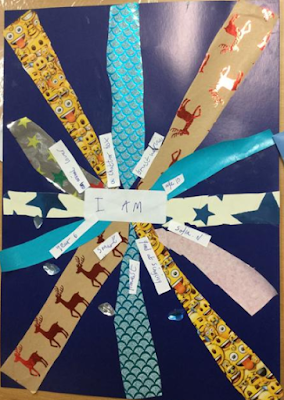The Writing
Ask if the children have heard the term 'nonsense poetry'. Show some examples. Show my simplified Tonight at Noon and
explain it’s an version of a poem by Adrian Henri. Which line do they
like best? What does the last line mean?
Tonight at Noon
Supermarkets will advertise £3 EXTRA on everything!
Tonight at noon
Penguins will tell each other jokes about humans
Traffic cops will stop snails speeding down the street
The first daffodils of autumn will appear
When leaves fall upwards from the ground to the trees.
Tonight at noon
Pigeons will hunt cats through city backyards
Pigs will fly in formation over Ellesmere
Christmas and Easter will swap places.
People in swimsuits will go moonbathing
Art galleries will be closed to people over 11
Poets will become millionaires while
Politicians have to live on minimum wages.
In alleyways, litter will clear itself neatly away
Rubies will turn to sapphires
Diamonds to dust
and
You will tell me you love me
Tonight at noon.
Ask them to put the heading Tonight at Noon. Tell them they are going to write their own version of the poem, but that the group is going to brainstorm it together first.
Discuss these ideas, one by one. They can either do this preparation exercise as a whole group or in pairs/threes.
Imagine something that’s really gentle acting fierce.
Imagine something that’s really slow going extremely fast.
Imagine something that lives in the sea suddenly turning up on land.
Imagine something precious turning to something rubbish.
Imagine a famous person doing something crazy.
Imagine something weird happening to the sky (day or night).
Imagine the seasons getting mixed up.
Imagine something crazy happening in schools.
Imagine someone very, very unlikely
winning a major talent contest.
When all the children have some ideas, then it's time to write them up into a poem. I like to do this process line by line, all together, so we move at the same pace. As usual I tell them that if they get stuck on a line, just to leave it and wait for the next one.



















